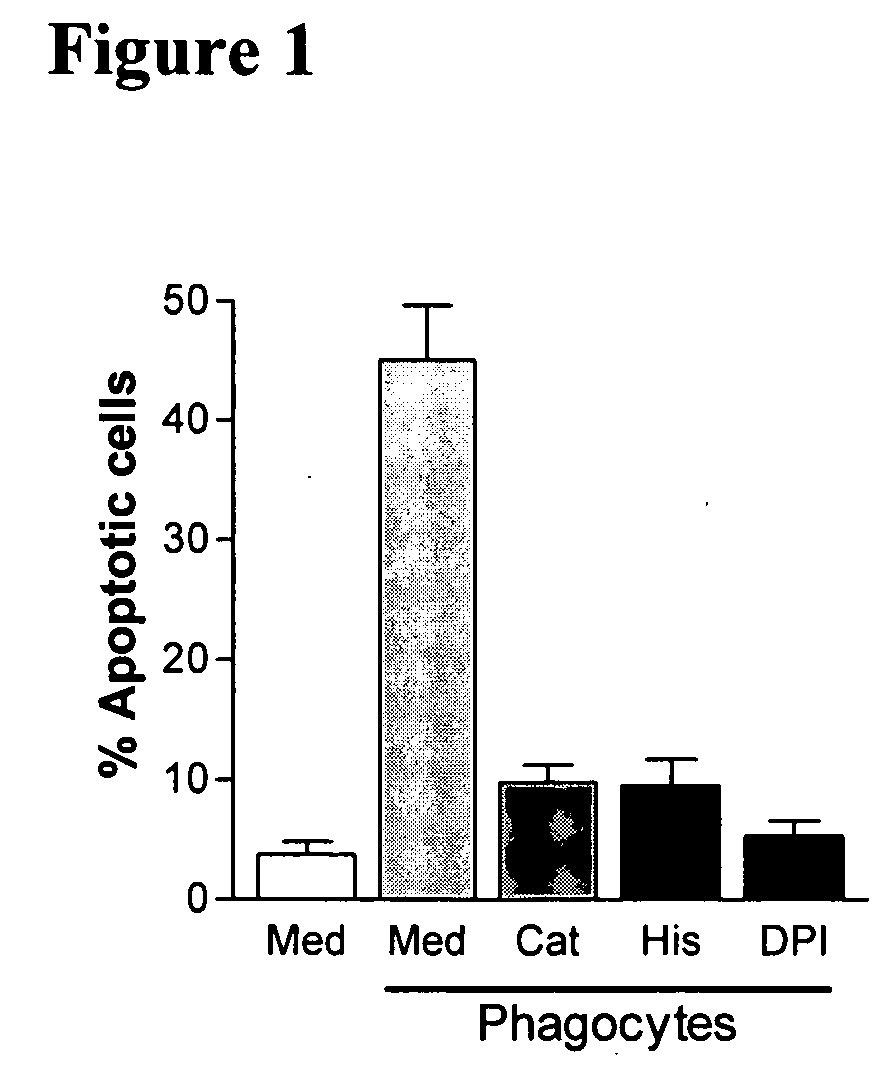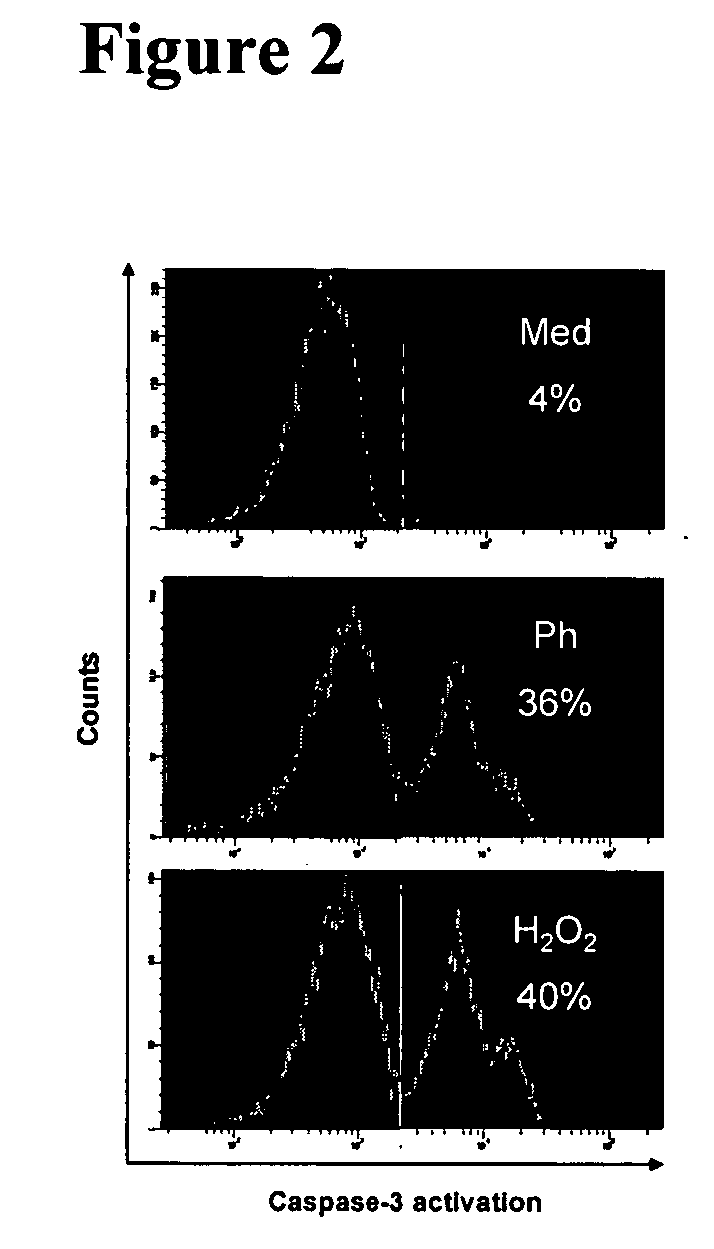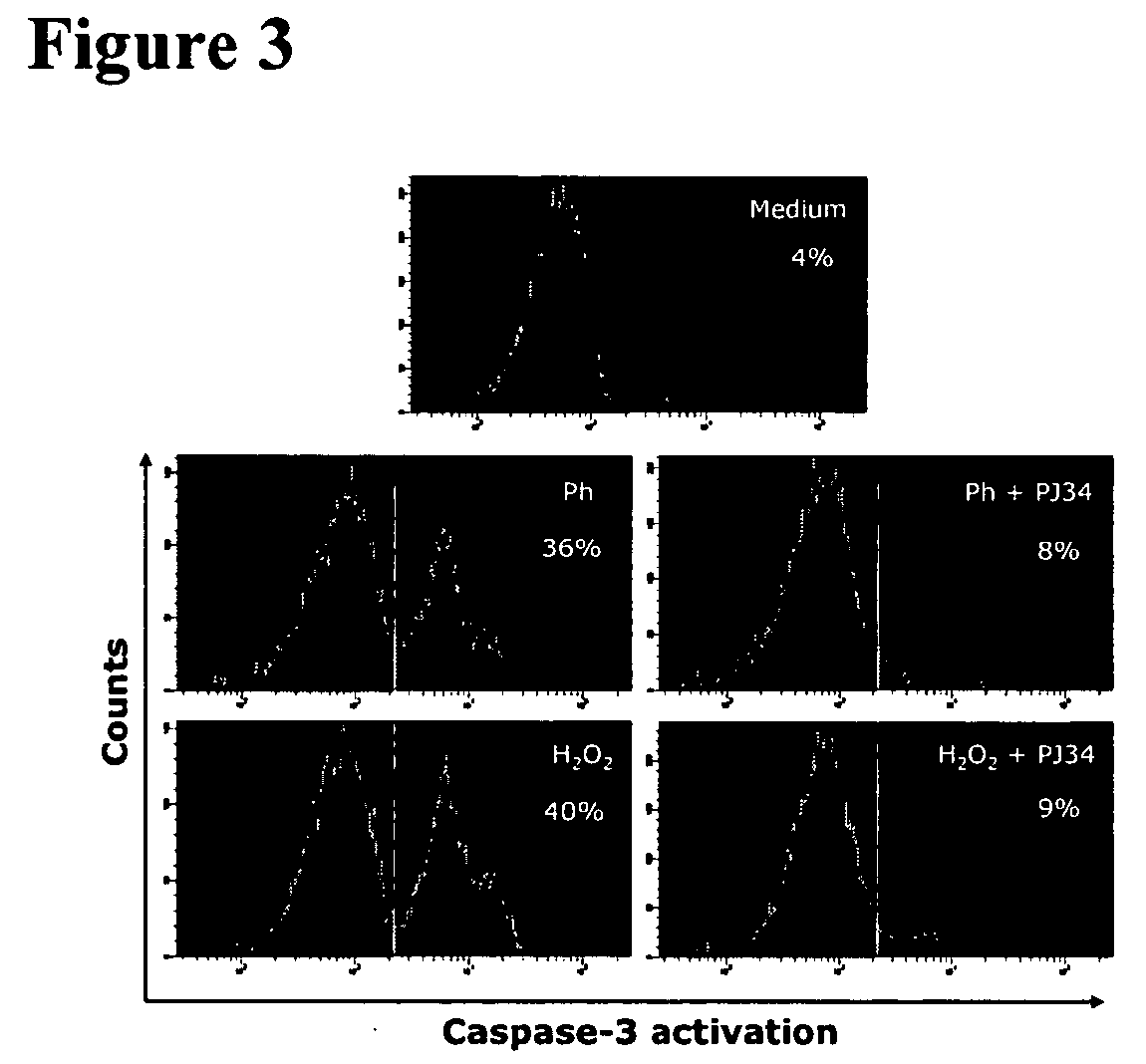Use of PARP-1 inhibitors for protecting tumorcidal lymphocytes from apoptosis
- Summary
- Abstract
- Description
- Claims
- Application Information
AI Technical Summary
Benefits of technology
Problems solved by technology
Method used
Image
Examples
example 1
[0089] Subjects with AML in a first, second, subsequent or complete remission are treated in 21-day courses with IL-2 (35-50 μg (equivalent to 6.3-9×105 IU) subcutaneously (s.c.). twice daily), repeated with three to six-week intermissions and continued until relapse. In cycle #1, patients receive three weeks of low dose chemotherapy consisting of 16 mg / m2 / day cytarabine, and 40 mg / day thioguanine. Concomitantly, patients are injected subcutaneously with an effective amount of a pharmaceutically acceptable form of a PARP-1 inhibitor, 3-aminobenzamide. Additionally, the patients are administered an effective amount of a pharmaceutically acceptable form of histamine dihydrochloride to boost circulating histamine to a beneficial level twice daily (above 0.2 μmole / L). Histamine levels can be continually boosted to beneficial levels by administering histamine dihydrochloride by injection at 0.2 to 2.0 mg or 3-10 μg / kg twice daily in a pharmaceutically acceptable form of a ROM inhibitory ...
example 2
[0093] As detailed above, a significant part of the dysfunction of tumor-killing lymphocytes at the site of malignant tumor growth has been attributed to inhibitory signals from tumor-infiltrating or tumor-adjacent phagocytes. The phagocytes produce and secrete reactive oxygen species (“oxygen radicals”) via a membrane NADPH oxidase, and these phagocyte-derived radicals have been shown to trigger dysfunction and apoptosis in tumoricidal lymphocytes such as NK cells and cytotoxic T-cells. However, the molecular events underlying phagocyte-induced lymphocyte apoptosis are not fully understood. The role of two enzyme systems responsible for induction and execution of apoptosis, caspases and the poly(ADP-ribose) polymerase (PARP) were investigated. Human tumoricidal lymphocytes were incubated with autologous mononuclear phagocytes or with exogenously added hydrogen peroxide, and assayed for apoptotic features at various time points. Although lymphocytes that were subjected to phagocytes...
example 3
[0094] Subjects suffering from Hepatitis C are identified. Individuals are administered 100 mg / day of a PARP-1 inhibitor, PJ34, intravenously for a period of three weeks. A reduction in symptoms associated with Hepatitis C was observed in the treated patient populations. Subjects who received PJ34 exhibited a reduction in ROM-mediated damage and increase in cytotoxic lymphocyte activation as compared to subjects who did not receive a PARP-1 inhibitor.
PUM
| Property | Measurement | Unit |
|---|---|---|
| Time | aaaaa | aaaaa |
| Dimensionless property | aaaaa | aaaaa |
| Dimensionless property | aaaaa | aaaaa |
Abstract
Description
Claims
Application Information
 Login to View More
Login to View More - R&D
- Intellectual Property
- Life Sciences
- Materials
- Tech Scout
- Unparalleled Data Quality
- Higher Quality Content
- 60% Fewer Hallucinations
Browse by: Latest US Patents, China's latest patents, Technical Efficacy Thesaurus, Application Domain, Technology Topic, Popular Technical Reports.
© 2025 PatSnap. All rights reserved.Legal|Privacy policy|Modern Slavery Act Transparency Statement|Sitemap|About US| Contact US: help@patsnap.com



